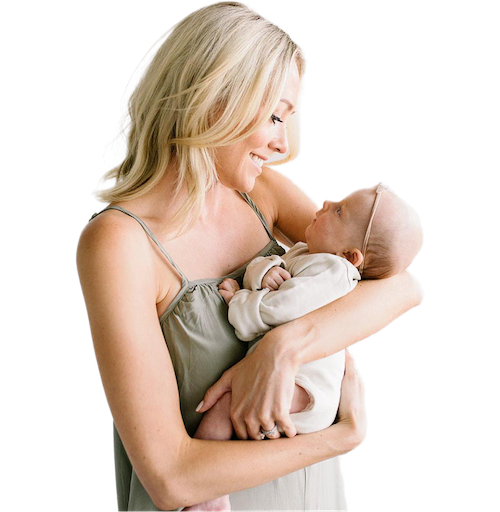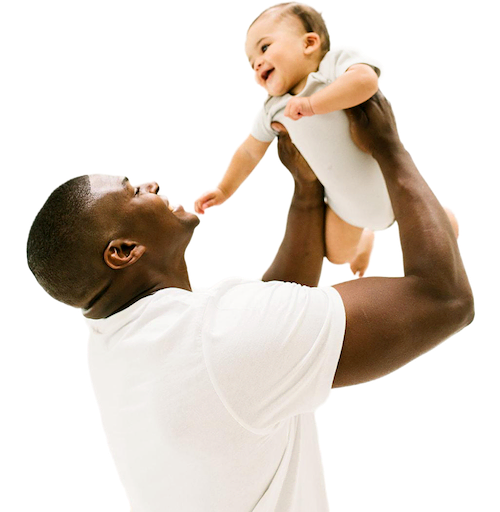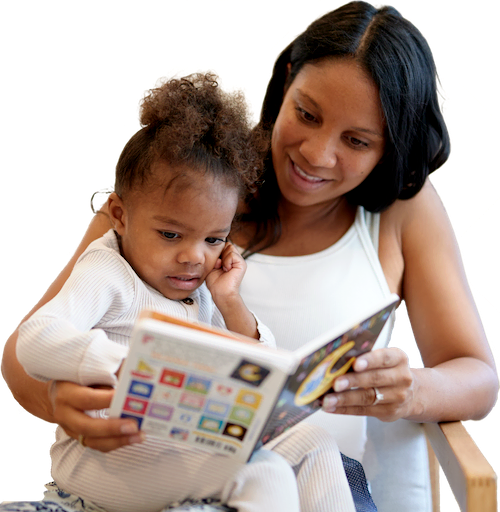Rolling over is such an exciting milestone, but it can make sleep a bit tricky. Let’s talk about all about tummy sleep, like when it’s safe for your baby to sleep on their stomach and how to help if they’re upset sleeping on their tummy.
Taking Cara Babies Classes
stars ( reviews)
Wish you had a great little sleeper? I can help! I’ll teach you everything you need to know to lay a healthy sleep foundation to achieve great days and nights, whether your little one sleeps on their tummy or not. Choose your child’s age to get started:
Is it safe to put my baby down to sleep on their tummy? anchor
No, it’s not safe to put your baby to sleep on their tummy. For your baby’s first year, you are always going to place them on their back for sleep. Research shows a decreased risk of SIDS when babies are placed flat on their backs for sleeping (specifically, on a firm mattress with no loose bedding).(1,2) This is true, even for babies with reflux.(3)
Expert Tip: Need more on setting up a safe sleep environment? My safe sleep checklist covers all things safe sleep.
When can babies sleep on their stomach? Can newborns sleep on their stomachs?anchor
There is not a universal age for safe tummy sleep because all babies develop on their own timelines. However, once your baby can purposefully and consistently roll from back to tummy and tummy to back, most pediatricians will say your baby sleeping on their stomach is safe, as long as they're unswaddled on a firm infant mattress with no loose bedding (be sure to check with your doctor though).
Keep in mind, you should continue to place your baby on their back for sleep. But, if they’re strong enough to roll onto their tummy, most doctors will agree they’re strong enough to lift their head and safely sleep in this position. Even if your baby seems to be face down after rolling over onto their belly, this same principle applies: if they have the strength to roll over, they have the strength to lift or turn their head while sleeping on their tummy (again, as long as they're unswaddled on a firm infant mattress with no loose bedding).
If your baby is rolling to their tummy, for safety reasons they MUST NOT be swaddled. I’ve got a blog just for you on transitioning out of the swaddle that can help.
Expert Tip: Do you have a newborn who is rolling to their side? This is often different from an older baby who is showing signs of rolling. We call this the newborn curl.
What should I do if my baby rolls on their stomach while sleeping?anchor
You may find that your baby is so accustomed to sleeping on their back that rolling to their tummy while sleeping makes them very upset. This is what happened when my son started rolling over onto his belly, and I remember flipping him over 1,143 times one night! (That may be a bit of an exaggeration, but it sure felt like that!)
If your baby is waking up crying after rolling over in their sleep, you don't have to go in and roll them to their back each time. But, expect that it will take time for them to learn to like this new sleeping position.
Here are some tips for how to teach your baby to sleep on their tummy:
Practice tummy time. During the day, practice lots of tummy time. Work on rolling back to belly and belly to back.
Provide comfort. Resist the urge to roll your baby to their back. Instead, rub their back, pat their bottom, and try to get them comfortable to help them fall asleep while on their tummy.
Be patient. For most babies, it takes about a week to adjust to tummy sleep or figure out how to roll back.
If your baby is rolling in their sleep and is comfortable sleeping on their stomach, you don’t need to do anything as long as they're unswaddled on a firm infant mattress with no loose bedding. Lots of babies actually prefer tummy sleep once they are able to roll both directions. Please talk to your pediatrician if you have any concerns about your baby and tummy sleep.
Important Note: Please remember, as soon as your baby shows signs of rolling it’s time to transition out of the swaddle.
What should I do if my baby sleeps face down on the mattress? anchor
Little ones love to bury their face into the crib mattress. And in most cases, it’s perfectly safe. If your little one is burying their face in the mattress, be sure to check on these three things.
Use a mattress designed for infants. Mattresses like a crib mattress that are specifically designed for infants have a firm surface and are designed to keep babies safe.
Keep the crib free of loose bedding. Make sure that there is no loose bedding, pillows, or toys in the crib. We only want the crib mattress with a fitted sheet.
Be sure your little one is not swaddled. Once a little one shows signs of rolling, it’s time to come out of the swaddle. A sleep sack is a great option and is considered safe when little ones are rolling.
Always start with your little one on their back. For the first 12 months, we are always going to lay your baby on their back for sleep. If they are strong and capable enough to roll on their own, it's okay to let them sleep on their tummy.
If you’re uncomfortable, feel free to go in and turn their head. But truly, little ones love this and if they need to they will lift up that head and turn it on their own.
Can I use any products or pillows to keep my baby from rolling in their sleep? anchor
No, it’s not safe to use any pillows or products to keep babies from rolling. Please know that safe sleep is our top priority. The safest place for a baby to sleep is in a “crib,” “bassinet,” “portable crib," or “play yard” with a firm, flat surface and nothing else in the crib (except a fitted sheet). We don’t want to use sleep positioners, pillows, or any weighted sleep sacks to keep your baby on their back. These are NOT safe and pose more of a risk.
If your baby is showing signs of rolling and needs to drop the swaddle, there are a couple of transitional products that can help with sleep. One is the Swaddle Sleeves (use code CARA10 for 10% off). The sleeves help muffle the startle reflex in the arms while still allowing the baby to move around and get into a comfortable position. Some parents also love Merlin’s Magic Sleep Suit. This 3-layered suit provides babies with the comfort they need by helping to calm their twitches and startle movements that can wake them prematurely. (Code CARA15 saves you 15%)
Rolling over and tummy sleep often begin when babies are 3-4 months old, a time filled with developmental advances and sleep challenges. If you are in this tricky phase, I have a resource for you! Navigating Months 3 & 4 is a 50-page ebook that will guide you through the 4-month sleep regression and help you on your journey towards more restful nights.
If your baby reaches 5 months and is still struggling, I have classes that can help. The 5–24 Month Collection will walk you step-by-step through a plan to conquer nights, naps, and every bump along your sleep journe
References
5 Sources
Corwin. (2021). Sudden infant death syndrome: Risk factors and risk reduction strategies
National Institute of Child Health and Human Development. (2024) About back sleeping.
American Academy of Pediatrics. (2022). Sleep-Related Infant Deaths: Updated 2022 Recommendations for Reducing Infant Deaths in the Sleep Environment
Hewitt et. al. (2020). Tummy Time and Infant Health Outcomes: A Systematic Review
National Institute of Child Health and Human Development. (2024). What Are the Known Risk Factors?
Keep in mind that the information and content on this blog is for informational purposes and should not be considered medical advice. If you have questions about your child, please reach out to your doctor.












